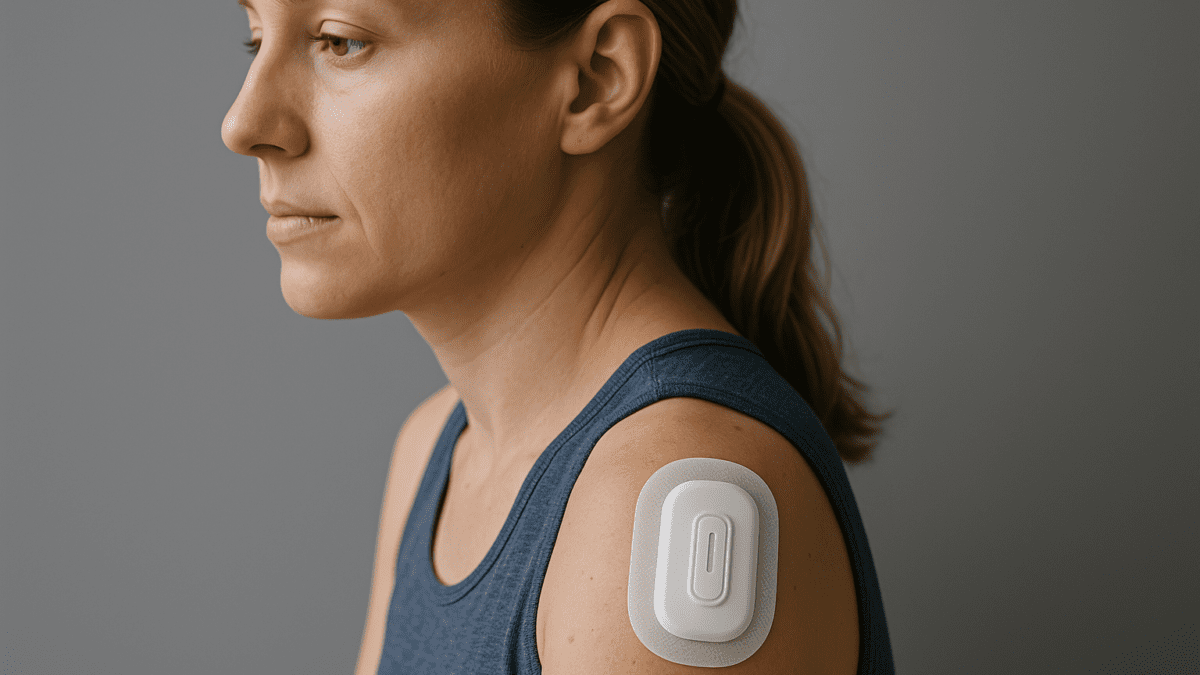Wearable Biosensors: How Next-Gen Health Patches Are Redefining Patient Monitoring
Table of Contents
Introduction
The future of healthcare is moving closer to the skin—literally. Beyond smartwatches and fitness trackers, a new generation of wearable biosensors (often in the form of thin, flexible health patches) is transforming how patients are monitored. These innovations combine real-time sensing, AI analytics, and IoT connectivity, making healthcare more personalized, proactive, and predictive.
In an era where hospitals are overwhelmed with chronic cases and patients demand greater autonomy, wearable biosensors are becoming a MedTech game-changer.
What Are Wearable Biosensors?
Wearable biosensors are skin-friendly devices—usually adhesive patches—that measure physiological and biochemical signals from the human body. Unlike fitness wearables that track general activity, biosensors are clinical-grade tools designed for:
- Monitoring glucose, lactate, hydration, and stress levels
- Tracking heart rate variability, blood oxygen, and temperature
- Providing continuous health data to doctors, hospitals, and caregivers
In short, these health patches act as mini medical labs, continuously gathering data without the need for invasive procedures.
Why Biosensors Are the Future of Patient Monitoring
- Chronic Disease Management: Chronic illnesses like diabetes and heart disease require constant monitoring. Biosensors can track blood glucose trends or detect arrhythmias in real time—helping patients avoid emergencies.
- Post-Surgery and Elderly Care: Instead of hospital stays, patients can go home with biosensors that send alerts to doctors if complications arise. This reduces hospital readmissions and costs.
- Preventive Healthcare: AI algorithms analyze biosensor data to predict risks early—whether it’s dehydration, low oxygen, or even infection markers.
- Sports & Performance Optimization: Athletes use biosensors to track lactate levels and hydration, optimizing training and reducing injury risks.
Features That Make Them Smarter
- Real-Time Data Capture – Sensors collect vital signs every second.
- AI & Predictive Analytics – Machine learning predicts risks before symptoms appear.
- Remote Monitoring – IoT sync allows doctors to monitor patients from afar.
- Comfortable & Discreet – Flexible, breathable patches replace bulky machines.
Global Innovations in Biosensor Technology
- Abbott’s FreeStyle Libre – Continuous glucose monitoring patches for diabetes patients.
- Philips Health Patch – Remote monitoring for hospitals and home care.
- MIT & Harvard Research – Wearable biosensors that detect stress hormones through sweat.
- Startups like BioIntelliSense – Creating multiparameter patches tracking temperature, respiratory rate, and more.
These innovations show that biosensors are not just prototypes—they’re already entering mainstream healthcare.
Benefits for Healthcare Systems
- 24/7 Monitoring – No gaps between doctor visits.
- Faster Diagnosis – AI detects anomalies before they escalate.
- Cost Savings – Fewer hospital visits, optimized treatments.
- Personalized Care – Each patient’s treatment plan is tailored using real data.
- Patient Empowerment – Users can track their health without dependency on hospital equipment.
Challenges and Concerns
- Accuracy and Calibration – Ensuring sensors provide clinical-grade reliability.
- Affordability – Making patches accessible for large populations.
- Data Security – Protecting sensitive medical data from breaches.
- Regulatory Approvals – Meeting strict medical compliance standards.
Future Outlook
In the next five years, biosensor patches will move from niche devices to everyday healthcare essentials. Expect to see:
- Integration with digital twins in healthcare for personalized treatment simulations.
- Insurance providers adopting biosensors to reduce costs and claim risks.
- Expansion beyond hospitals into corporate wellness, elderly homes, and even schools.
Ultimately, wearable biosensors bring healthcare from the hospital to the home—and even to your wrist or skin patch.
Conclusion
The rise of wearable biosensors and health patches represents a critical step forward in MedTech. By combining AI, IoT, and biomedical innovation, they are redefining how patients are cared for—making healthcare smarter, faster, and more patient-centric.
As these devices mature, they promise a future where a simple patch could detect disease, alert doctors, and save lives—all in real time.
CTA
Stay ahead in MedTech innovation with iTMunch.
You May Also Like: From Awareness to Action: How Strategic Whitepaper Marketing Drives B2B Growth in 2025





